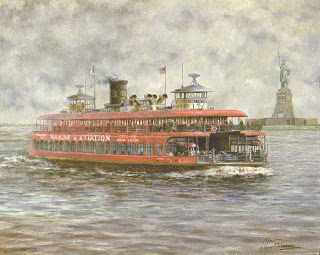In
the 1950's Jergens lotion was already on the scene but they decided
to launch a new campaign to boost sales. They did this in the form
of magazine ads. Each ad told a short story that always ended
up with Jergen's lotion making all the difference in the lives of the
people in the ads. The ad
you
see here here is an example:
This
didn't particularly interest me until I learned that my Grandparents
Brattleboro, Vermont neighbors had been chosen for one of the Jergens
ad series.I hate that I don't have a copy of the actual ad but what I
do have is the original
Jergens'
script.
The
script is entitled “Four youngsters to feed, Daily Housework &
Chores on her Vermont farm” and it features the dutiful wife
Bertha, husband Herman and their 4 children. The script calls for 4
pictures (with instructions on how to stage them) and then a short
blurb under each to promote Jergens' Lotion. It reads like this:
Ad
# 1 (Bertha gazing dreamily into the camera)
“My
secret for pleasing Herman is always to be cheerful and prettied up
when the day is done. I have a shower, put on an attractive dress,
fresh makeup and, of course, Jergens Lotion in case we might hold
hands across the table”.
Ad
# 2 (Bertha and daughter) “Mary and I love to wax and polish and it
doesn't bother my hands at all because Jergens Lotion keeps them so
smooth and soft. Herman says they look as if I am a lady of leisure”.
Ad
# 3 (Bertha washing dishes)) “Those hungry wolves of mine make
every meal a production but I don't mind the dishes. Jergens Lotion
gives my hands a 'never put them in water look' because I keep a
bottle in the kitchen”.
Ad
# 4 (Whole family seated for dinner. Bertha and Herman holding hands
across the table and gazing into each others eyes.) “Herman beams
at Martha across the table and gives her Jergens-soft hand an extra
squeeze that seems to say 'we're just about the happiest couple in
the world aren't we ?”
The
1950's … a wondrous time … when a bottle of Jergens Lotion and
lots of hard work and blind devotion on the wife's part could solve
all your problems.








